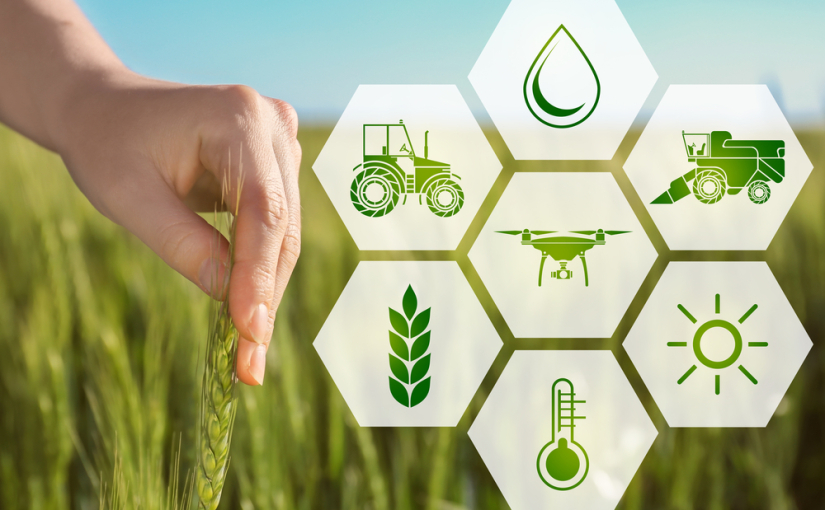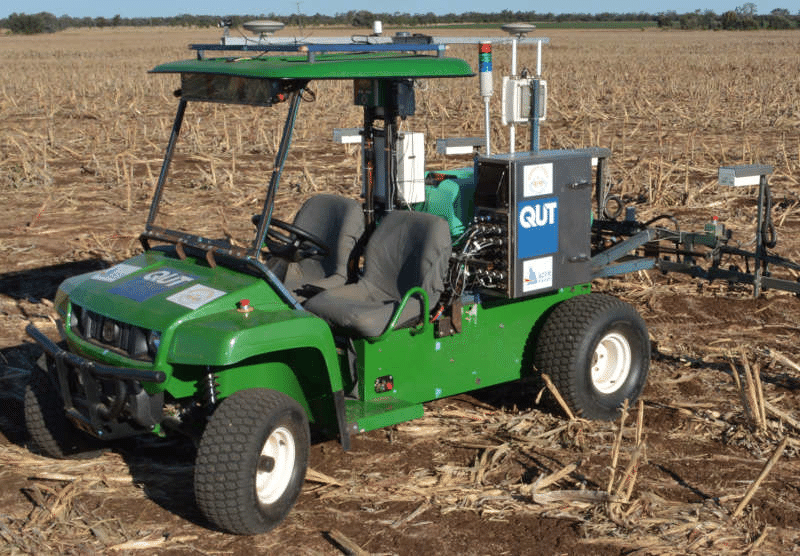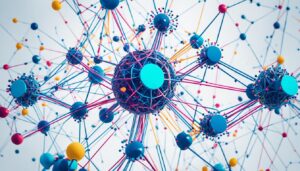
- Introduction
- The father of AI
- How AI is used in agriculture
- The first robot in agriculture
- Examples of artificial intelligence in agriculture and leading AgTech companies
- Benefits of agriculture by AI
- Global adoption of AI in agriculture
- The history of AI in agriculture
- Conclusion: The future of AI in agriculture
- References
- Frequently Asked Questions (FAQs)
Introduction
As the global population continues to grow, so does the demand for sustainable food production. Artificial intelligence (AI) is rapidly becoming an integral part of the solution, enabling the agriculture industry to become more efficient, sustainable, and data-driven. In this blog post, we will explore how AI is transforming agriculture, its key applications, and the benefits it offers. We will also delve into the history of AI in agriculture and its future potential.
The father of AI

Dr. John McCarthy, an American computer scientist, is often referred to as the father of AI. He coined the term “artificial intelligence” in 1955 and played a significant role in the development of AI as a field of study. Dr. McCarthy’s research laid the foundation for many AI concepts and technologies that are widely used today.
How AI is used in agriculture
AI in agriculture refers to the implementation of advanced algorithms and machine learning techniques to analyze data from various sources, such as weather data, soil conditions, and crop health. AI-powered tools help farmers make better decisions, optimize resources, and increase productivity. The primary applications of AI in agriculture include:
- Precision farming : Precision farming, also known as precision agriculture, involves the use of technology and data to optimize crop management. It allows farmers to make informed decisions about the application of resources such as water, fertilizers, and pesticides. The primary components of precision farming include:
- Remote sensing: Satellite imagery, aerial photography, and drones are used to collect detailed information on crop health, soil conditions, and other factors that can influence productivity.
- Geographic Information Systems (GIS): GIS technology enables farmers to map and analyze data collected from remote sensing, helping them identify patterns and trends.
- Variable Rate Technology (VRT): VRT systems allow farmers to apply inputs such as fertilizers, pesticides, and water in varying amounts based on the specific needs of each part of the field.
- Crop and soil monitoring : Crop and soil monitoring is essential for maintaining optimal growing conditions and maximizing yield. AI-powered monitoring systems provide real-time data on factors such as soil moisture, temperature, nutrient levels, and crop health. These systems often use sensors placed throughout the fields, combined with satellite or drone imagery, to collect data that is then analyzed using machine learning algorithms. The insights generated can help farmers make informed decisions about irrigation, fertilization, and other crop management practices.
- Pest and disease detection : AI-driven pest and disease detection systems use advanced image recognition and machine learning techniques to identify pests, diseases, and other issues that can impact crop health. These systems typically rely on high-resolution imagery from satellites, drones, or ground-based cameras. AI algorithms analyze the images to identify signs of pest infestations or diseases and generate alerts, allowing farmers to take preventative or remedial action quickly.
- Automated irrigation systems : Automated irrigation systems use AI and IoT (Internet of Things) technologies to optimize water usage and ensure that crops receive the right amount of water at the right time. These systems typically consist of soil moisture sensors, weather data, and machine learning algorithms that analyze the data to determine the optimal irrigation schedule. By automating the irrigation process, farmers can conserve water, reduce labor costs, and improve crop yield.
- Harvest optimization : AI can play a crucial role in optimizing the harvesting process, ensuring that crops are picked at the right time to maximize quality and yield. AI-powered tools can analyze data from weather conditions, crop growth rates, and other factors to predict the optimal harvest window. Additionally, AI-driven robotics and automation technologies can assist in the actual harvesting process, enabling farmers to harvest crops more efficiently and with less manual labor. This, in turn, reduces labor costs and minimizes the risk of crop damage or loss due to delayed harvesting.
The first robot in agriculture

The first agricultural robot, the “Agbot,” was developed in the early 1990s by Australian researchers. Agbot was designed to navigate autonomously in the field and perform tasks such as weed control and soil sampling. Since then, agricultural robots have become more advanced and versatile, with capabilities including planting, harvesting, and monitoring crop health.
Examples of artificial intelligence in agriculture and leading AgTech companies
There are several real-world examples of AI being used in agriculture to improve efficiency and productivity. Some of these include:
- Blue River Technology’s “See & Spray” system: This AI-driven system uses computer vision and machine learning to identify weeds among crops, enabling targeted spraying of herbicides, reducing chemical usage by up to 90%.
- IBM’s Watson Decision Platform for Agriculture: This platform uses AI and advanced analytics to provide farmers with actionable insights on weather, soil, and market conditions to optimize farm operations.
- Taranis’ aerial imagery and AI analytics platform: Taranis uses high-resolution aerial imagery and AI-powered analytics to detect pests, diseases, and other issues in fields, enabling farmers to address them proactively.
| Company Name | Product/Service Name | Description |
|---|---|---|
| Blue River Technology | See & Spray | An AI-driven system that uses computer vision and machine learning to identify and precisely target weeds, reducing herbicide use by up to 90%. |
| IBM | Watson Decision Platform for Agriculture | A platform that leverages AI and advanced analytics to provide farmers with actionable insights on weather, soil, and market conditions. |
| Taranis | Aerial Imagery and AI Analytics Platform | Utilizes high-resolution aerial imagery and AI-powered analytics to detect pests, diseases, and other issues in fields. |
| The Climate Corporation | Climate FieldView | A digital agriculture platform that helps farmers collect and analyze field data to make better decisions and optimize resources. |
| Granular | Granular Farm Management Software | A comprehensive farm management software that uses AI and data analytics to help farmers plan, manage, and analyze their operations. |
| XAG | P Series Plant Protection Drone | An autonomous drone designed for precision application of pesticides and fertilizers, reducing resource use and environmental impact. |
| Bowery Farming | BoweryOS | A proprietary software system that uses AI and automation to monitor, analyze, and optimize crop growth in indoor vertical farms. |
| FarmWise | FarmWise Titan FT-35 | An autonomous weeding robot that uses machine learning and computer vision to identify and remove weeds with precision. |
| AgEagle Aerial Systems | RX-48 and RX-60 Drones | Drones equipped with advanced sensors and AI capabilities for crop monitoring, data analysis, and mapping. |
| John Deere | AutoTrac Guidance System | A GPS-based guidance system for tractors and combines that uses AI to optimize field navigation and reduce overlap during planting and harvesting. |
Benefits of agriculture by AI
AI offers numerous benefits to the agriculture industry, including:
- Improved productivity: AI-powered tools help farmers make data-driven decisions to optimize crop yield and reduce waste.
- Enhanced resource management: Precision farming techniques enable farmers to use resources like water, fertilizers, and pesticides more efficiently.
- Sustainable farming practices: AI-driven insights help farmers implement environmentally friendly practices, reducing the industry’s environmental impact.
- Reduced labor costs: Automation and robotics enabled by AI can perform tasks like planting, harvesting, and sorting, reducing the reliance on manual labor.
- Better decision-making: Access to real-time data and analytics helps farmers make informed decisions, ultimately leading to increased profits.
Global adoption of AI in agriculture
Countries around the world are recognizing the potential of AI in agriculture and investing in its development. The United States, China, and India are among the countries at the forefront of AI adoption in agriculture. Several European countries, such as the Netherlands and France, are also embracing AI-driven farming techniques.
The history of AI in agriculture
Although AI has gained significant traction in agriculture in recent years, its roots can be traced back to the 1960s. The first use of AI in agriculture was in the form of expert systems – computer programs designed to emulate human expertise – for diagnosing crop diseases and recommending treatments. Over the years, advancements in technology and the growing availability of data have made it possible for AI to be applied in various aspects of agriculture.
Conclusion: The future of AI in agriculture
As technology continues to advance, the role of AI in agriculture is expected to grow exponentially. With improvements in machine learning, computer vision, and robotics, AI-powered solutions will become even more sophisticated, leading to further enhancements in productivity, sustainability, and resource management. Farmers and agricultural businesses must adapt to these changes and embrace AI-driven technologies to stay competitive in the global market.
References
- Blue River Technology. (n.d.). See & Spray. Retrieved from https://www.bluerivertechnology.com/see-and-spray
- IBM. (n.d.). IBM Watson Decision Platform for Agriculture. Retrieved from https://www.ibm.com/products/watson-decision-platform-for-agriculture
- Taranis. (n.d.). Taranis Platform. Retrieved from https://www.taranis.ag/platform
Embracing AI in agriculture is crucial for meeting the growing global demand for food while promoting sustainable farming practices. By understanding its applications, benefits, and history, we can better prepare for the future of farming and the role AI will play in revolutionizing the industry.
Frequently Asked Questions (FAQs)
Q1: Can small-scale farmers benefit from AI in agriculture?
A1: Absolutely! AI-driven technologies and tools are becoming more accessible and affordable, making them suitable for farmers of all scales. Small-scale farmers can benefit from using AI-powered applications to improve their decision-making, optimize resources, and increase productivity.
Q2: How does AI in agriculture contribute to sustainability?
A2: AI contributes to sustainable agriculture by promoting efficient use of resources such as water, fertilizers, and pesticides, reducing waste, and optimizing crop yields. AI-driven tools can also help farmers implement environmentally friendly practices, such as precision farming and automated irrigation, which minimize the negative impact on the environment.
Q3: Are there any drawbacks or concerns with implementing AI in agriculture?
A3: While AI offers numerous benefits to the agriculture industry, there are some concerns, including the risk of job displacement due to automation and the potential for AI-driven technologies to widen the gap between large-scale and small-scale farmers. Additionally, concerns about data privacy and security may arise as more agricultural data is collected and stored. It is essential to address these challenges and ensure that AI in agriculture is implemented responsibly and equitably.
Q4: What skills do farmers need to adopt AI-driven technologies?
A4: As AI becomes more prevalent in agriculture, farmers need to develop digital skills to effectively use AI-powered tools and applications. This includes understanding how to collect, analyze, and interpret data and being familiar with the operation and maintenance of AI-driven equipment. Additionally, farmers may need to collaborate with technology providers and data analysts to maximize the benefits of AI in agriculture.
Q5: How can AI help address the challenge of feeding a growing global population?
A5: AI can play a crucial role in addressing the global food security challenge by enabling farmers to produce more food with fewer resources. By improving productivity, optimizing resource management, and promoting sustainable farming practices, AI in agriculture can contribute significantly to meeting the growing demand for food while minimizing the environmental impact.





